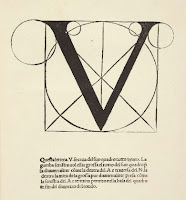With school starting back up, I thought I would focus on a topic that is an issue with students at the beginning of
every semester: Textbooks. During my undergraduate program, the book we used is, considered by some to be the best accounting textbooks out there for preparing
students for the issues covered on the CPA certification exam, Intermediate
Accounting by Kieso, Weygandt, & Warfield.
While
my instructors required the 13th edition, I tried to skate by with only using
the 12th edition and just photocopy the problem sets from fellow classmates who
purchased the 13th. I would often sit there with both editions trying to figure
out what changed to merit a new publication. Most of the times the only change
I could find was the color of textboxes and the variables used in the
problems.
Inspired
by this summer's 125th anniversary of the Journal of Accountancy, I
decided to get my hands on a first edition of Intermediate Accounting
and see what has changed over the years. The first edition was published in
1974 with a page count of--Wait, I can make this more fun.
Ring
Announcer: In the red corner, coming out of
retirement, the 38 year old weighing in at 3 pounds and 9 ounces. With a
respectable page count of 1151 pages, here he is INTERMEDIATE ACCOUNTING 1st
Edition!
Blow-by-blow
commentator: In the corner with him we have two
authors: Kieso and Weygandt. While rising to the top with his publication 1974,
he was replaced as champion by the slightly less famous second edition in only
1977. Will his experience getting published first help him against his
competitor today? Well we will find out in three short rounds.
Ring
Announcer: In the blue corner, the new-comer,
the 2 year old, weighing it at 5 pounds and 6 ounces. With the backbreaking
page count of 1379 pages, the reigning champ, INTERMEDIATE ACCOUNTING 13th
Edition!
Blow-by-blow commentator: In the corner with him we have Kieso and
Weygant, but also a third author: Warfield. Containing color images and
bolded keywords, he seems to be the easy favorite for the modern student. Will
this third author simply be a bucket man or will he be the key to the success
for the 13th edition?
Round
1: Problem Sets
The
only reason students still buy textbooks. While teachers hope their pupils read
the chapter before going to lecture, my experience says otherwise. (Note to any
of my former professors reading this: I,
of course, was the exception to this rule.) To test this questions I worked
through multiple questions from each book in the same chapter.
Each
textbook has the problems broken up into different types. For the 1st edition
it is Questions, Cases, and Problems. In the 13th edition it is Questions,
Brief Exercises, Exercises, Problems and Concepts for Analysis. Many of the questions found in the 1st
edition are still found verbatim in the 13th. <Point 1st Edition> However the development of the Brief
Exercises and Exercises help students ease into the homework before being hit
by the complex laborious Problems. Some of which take an hour to complete. <Point 13th Edition> Finally, one
of the things that I was surprised to find in the first edition was a selection
on the inside cover called "Checklist of Key figures". Brilliantly,
it gives key check numbers from about half of the questions in the chapter.
These numbers aren't always the answer that is asked for but it does help
students know if they are doing it right. <Point
1st Edition>
Round
2: Examples
In
lecture, it all makes sense. Everything the Professor did on the board seemed
simple and logical. Then the night before the assignment is due, panic sets in
and the spine of the textbook is cracked. I am basing the quality of examples
on their accessibility and their usefulness in completing the questions at the
end of the chapter.
I chose to focus on a chapter that covers a topic where the rules have not changed much over the past 40 years: Depreciation. To my surprise almost nothing has changed. The examples found in the first edition are mirrored word for word, number for number in the thirteenth edition. It is pretty amazing that authors could write examples 40 years ago what don't merit any changes for a modern audience
<Point 1st Edition> But equally as amazing is that the publishers resisted the urge to change the examples. Allowing students who have older editions to follow along as instructors work through the example.
<Point 13th Edition> (If you were curious I said almost nothing changed. The one change is the example in the 1st edition was Barek's Mining Company and in the 13th it was Stanley's Mining Company)
Round
3: AccessibilityThe
final round will look at the rest of the book. Do all the words that fill these
1000+ pages help? How good is the book at introducing topics to a novice? Are
the pretty pictures helpful? Necessary?
Similar to my findings in the example round, the text of both books are eerily similar. Sentence after sentence is mirrored. Occasionally, the thirteenth edition adds modern references, but they seem so superfluous that I can't award any points for it. Picture wise the books are again a dead heat. The colored in text-boxes of the thirteenth edition are equally as striking to they eye as grayed out text-boxes in the first edition.
Winner: 1st Edition
Editor's Note: Earlier I praised the 1st edition for its checklist of key figures. I found it rather ingenious. Especially now, I study for certification exams. As I go back and practice, I have no idea whether I was right or wrong unless I beg former professors to check their answer bank. But I sadly learned that my favorite feature did not survive into the second edition. Replaced with a list of Official Accounting Pronouncements.
To see the photo montage that inspired this post click
here.









.jpeg)








